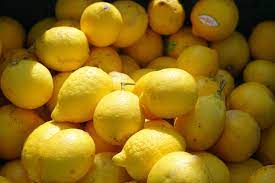
Firstly, introducing Auscrops, a high-tech market vending company bridging farmers and customers together through market vendors. Click here to find out more about Lemons With Brown Spots as well fruit and vegetable offers.
Lemons With Brown Spots
Among the many queries surrounding fresh produce, one that often arises is about brown spots on citrus fruits. What do these blemishes mean, especially on a lemon? Is it safe to consume them?
Spotting the Spots
You might have noticed brown spots appearing on the skin of a lemon, particularly those you’ve had for a while. These spots are usually an indication of age and are a natural part of the fruit’s aging process.
A Sign of Aging
As the fruit begins to age, the skin loses its vigor and develops these spots. However, it’s important to note that brown spots on the outer layer do not automatically mean the inside of the fruit is spoiled. In many cases, the inside remains fresh and usable.
Decoding the Spots
Despite their unappealing look, brown spots on the skin are usually harmless and don’t impact the fruit’s taste or quality. However, it’s essential to inspect the fruit thoroughly. If the spots are soft and squishy, or the fruit gives off an unpleasant odor, it’s best to discard it.
The Storage Factor
Storage plays a crucial role in the appearance of brown spots. Storing lemons in a cool, dry place can slow down the aging process and prevent the onset of these spots. If you’ve got a large batch, consider storing them in the refrigerator to extend their shelf life.
When to Use and When to Discard
The rule of thumb with brown-spotted lemons is simple. If the spots are superficial and the fruit’s interior remains unaffected, you can still enjoy your citrus delight. However, if the spots are accompanied by an off smell, a squishy texture, or visible mold, it’s time to say goodbye.
In conclusion, brown spots on lemons are usually a sign of aging but don’t necessarily mean the fruit is bad. Proper storage can help prevent the onset of these spots, and a quick check ensures you’re using a healthy, tasty fruit. So next time you spot a brown mark, don’t be too quick to toss it out—it might just need a closer look!
Click here to read similar articles.
 Français
Français 











